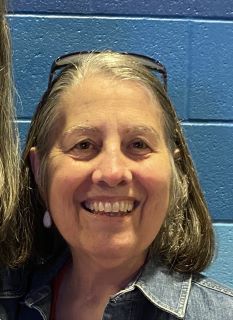 Written by Jocelynn Goff, mother of Iron Rose Sister Ministries’ Founder and Director Michelle J. Goff
Written by Jocelynn Goff, mother of Iron Rose Sister Ministries’ Founder and Director Michelle J. Goff
What’s your learning style? I’ve been asked that question at several medical appointments. The nurse wanted to know how I would best receive the information and directions from the doctor.
There is purpose in knowing our own learning style for ourselves, in a classroom, our workplace, a doctor’s appointment, daily conversations, and more. There’s also purpose for understanding this in our relationships and interactions with others. When we interact with a child, family member, friend, neighbor, or coworker it is helpful if we can understand even a little bit of how they learn to have realistic expectations for their retaining the information we are sharing.
There are four basic types of learning styles: visual, auditory, read/write, and kinesthetic.
If I’m a visual learner, then the doctor’s approach could be to show me a picture of the affected part of my body or write a list of directions out for me. To help myself process and retain learning I could use a picture, a graph, a daily organizer, a list, or see a finished product. In relationships, I could utilize those same tools. Obviously, it would be a natural process and not a “let me teach you this way” kind of format.
For an auditory learner, the doctor may give verbal instructions and quite possibly ask me to repeat them back to him. To help myself or in relationships, I could possibly ask if the information can be repeated back either verbatim or by rewording it using their or my own words. A song can also be a useful tool for imparting information. Family stories passed down through the generations are an additional significant, powerful learning tool.
If read/write is my best learning style, then the doctor may share a website for me to research or give me a printed copy of the diagnosis and instructions. Additionally, I can seek other reliable sources in books, websites, journals, or other recommended documents. For myself and in relationships, rewriting the information or just reading it for myself are useful tools.
For a kinesthetic learner, a hands-on approach is best, so the doctor may use a model of the affected body part for me to touch and possibly a simulation of movements that are helpful in the healing process. For myself and in relationships, effective hands-on types of activities include drawing, cooking, eating, taking a hike alone or with a friend, planting a garden, or creating an artistic design.
God, who created learning styles, used all of them in the celebration of the Passover meal. Before Easter, I was reading about Pesach Seder (Passover meal) in an article our Bible class teacher shared. This part of the reading jumped out at me,
“…the Pesach Seder is one of the most carefully constructed learning experiences ever created. In an amazing combination of aural and tactile learning tasks, the Seder has something for everybody—a drink, food, symbols, prayers, songs, stories, philosophy, text study, simulations, ritual actions—all designed with one overall goal” to take each person at the Seder back to Egypt, to re-enact the dramatic Exodus story, to make each one of us feel as she or he had actually been redeemed from Mitzrayim (Egypt).”This exposure in all of the learning styles ensures that the overall goal is accomplished for each individual to experience Passover and its significant meaning.
Similarly, Jesus, as the Master Teacher, employed all of the learning styles. For the visual learner, He let His listeners visualize the birds of the air and the lilies of the field in Matthew 6:25-33. For the auditory learner, He gave the Sermon on the Mount in Matthew 5-7. For the read/write learner as He spoke to an expert in the Law, “What is written in the Law?” He replied, “How do you read it?” (Luke 10:26). For the kinesthetic learner, there are a plethora of examples, such as when He feeds the 5,000 (Mark 6:30). He even employs several styles at once when He draws with His finger on the ground (John 8:6). Jesus is truly the Master Teacher and gives us every opportunity to know Him and learn from His teachings in our own learning style.
The book, Called to Listen by Michelle J. Goff, employs the various learning styles through 40 days of listening: “to the Good Shepherd, the Creator, the Father, the Son, the Spirit, and through the five senses.” This may even expand your learning abilities in styles you’ve previously been unaware of that speak to you.
I encourage you to find your learning style and begin to recognize this in the relationships around you. I invite you to read Called to Listen to hear the message our Heavenly Father speaks “… through His Word, through nature, through Christian brothers and sisters, even through silence…” This book offers you prompts to use your five senses and explore your learning style.
So, are you primarily a visual, auditory, read/write, or kinesthetic learner? Share or demonstrate in the comments!
Footnote:
This Seder outline was adapted from The Art of Jewish Living: The Passover Seder by Dr. Ron Wolfson, published by the Federation of Jewish Men’s Clubs and the University of Judaism, 1988. Additions and edits by Daniel B. Stockstill, 1999.